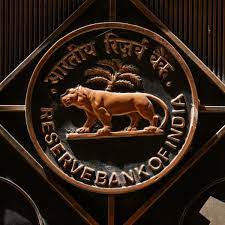
RBI's move to increase the Risk weight for Lending
RBI's move to increase the Risk weight for Lending
Important for Prelims:
Reserve Bank of India (RBI), Risk weight on Bank Exposure, NBFCs.
Important for Mains:
GS-3: RBI's move to increase the Risk weight for Lending, Inclusive growth and issues arising from it.
29 Nov. 2023
Why in News:
Recently, The Reserve Bank of India (RBI) directed banks and non-banking financial companies (NBFCs) to reserve more capital for risk weights.
- The mandatory risk weight requirement has been increased by 25 percentage points.
- This would be applicable to unsecured personal loans, credit cards and lending to NBFCs.
RBI’s Move Pertaining to Unsecured Loans:
Increased Risk Weights:
- The RBI has raised the risk weight on banks' exposure to certain categories like consumer credit, credit card receivables, and NBFCs.
- The risk-weights on banks’ unsecured personal loans and consumer durable loans have been increased to 125% from 100%, and that on credit cards have been increased to 150% from 125%.
- Further, the risk-weights on NBFCs’ unsecured personal and consumer durables loans, and credit cards have been increased to 125% from 100%.
- It means that banks and financial institutions need to set aside more capital as a buffer against potential losses arising from these specific loan categories.
- The RBI has, however, exempted microfinance loans by NBFCs from the risk-weight increase.
What is the risk weight:
- 'Risk weights' are an essential tool for banks to manage this risk.
- Risk weighting refers to the method used by regulators such as central banks or financial supervisory authorities to assess the risk associated with different types of assets held by banks.
- This method determines the amount of capital that banks need to hold against these assets as a buffer to cover potential losses.
- The risk weight assigned to different categories of assets is based on their perceived risk appetite.
- Lower risk assets get lower risk weights, requiring banks to allocate less capital against them, while higher risk assets get higher risk weights, requiring more capital allocation.
RBI's guidelines
Following steps need to be taken:
- Unsecured loans, especially consumer loans, were growing rapidly, surpassing the growth rate of less risky loan assets. This uncontrolled growth could pose a risk to the stability of the financial system.
- These loans are not backed by collateral, making them risky for lenders. If borrowers default on these loans due to economic downturn or personal financial issues, it can lead to significant loan losses to banks and other lending institutions.
- By increasing the risk weight on consumer loans provided by banks, NBFCs (non-banking financial companies) and credit card providers, the RBI aims to make these loans more capital-intensive for financial institutions.
- This helps to align capital requirements with the associated risks, making it more expensive for lenders to make such loans.
- Establishing board-monitoring procedures for these advances helps ensure that banks have appropriate risk assessment mechanisms. The move is aimed at curbing the risk associated with unsecured retail loans.
- The overarching goal is to maintain financial stability by eliminating imbalances in lending practices and ensuring that rapid growth in unsecured retail loans does not pose systemic risks to the banking and financial sectors.
About Capital Adequacy Ratio (CAR):
- The capital adequacy ratio is a measure of a bank's available capital expressed as a percentage of the bank's risk-weighted credit exposure.
- This is also known as the capital-to-risk weighted assets ratio (CRAR).
- It is used to protect depositors and promote the stability and efficiency of financial systems around the world.
Current scenario of unsecured credit for banks:
- For large banks, except microfinance institutions, unsecured loans constitute only 5–13% of their total loans. Moreover, loans given to NBFCs are 5-12% to banks.
- According to analysts' estimates, the share of the total affected book, which is NBFCs and unsecured loans, is as low as 10% for IndusInd Bank, and ranges from 15 to 20% for other major banks.
- Among NBFCs, the most affected would be SBI cards, as 100% of the loans are unsecured.
- Next would be Bajaj Finance as unsecured loans constitute 38% of total loans, followed by Aditya Birla Capital which has 20% exposure to unsecured consumer loans.
Impact of this move on banks and NBFCs:
- These regulatory changes may lead to an increase in loan rates for consumers.
- This increase in lending rates by banks to non-banking financial institutions may also impact corporate bonds, leading to higher yields and increased loan spreads for these institutions.
The road ahead:
- Banks and NBFCs need to reevaluate their risk models and lending practices for unsecured loans.
- Banks should continue to consider alternative strategies to manage risk while continuing to lend.
- To balance the impact of increasing risk-weight on unsecured loans, financial institutions need to diversify their loan portfolio by focusing on more secured loans or exploring other credit worthy sectors.
Source: The Hindu
----------------------------------------------
Mains Exam Question
What is the risk weight on bank exposure? Review the steps taken by the Reserve Bank of India (RBI) to reserve more capital for risk weight.